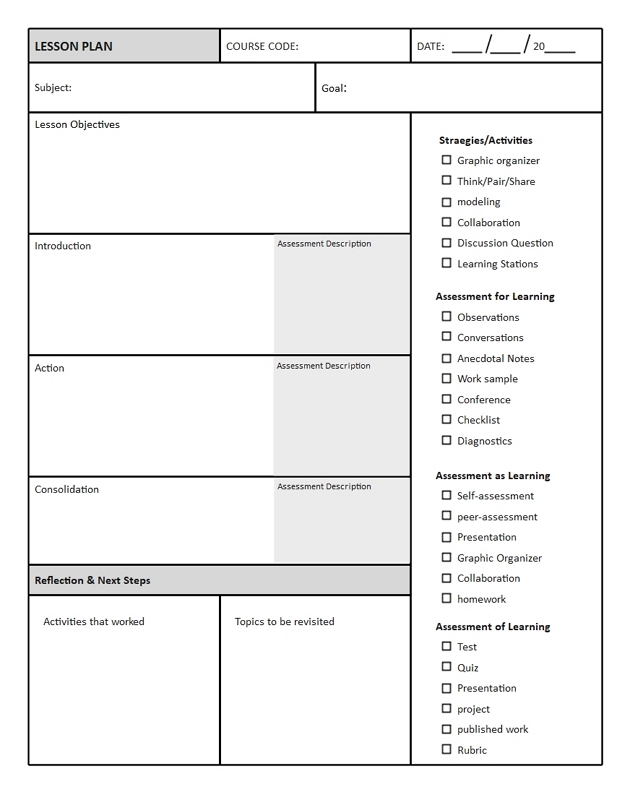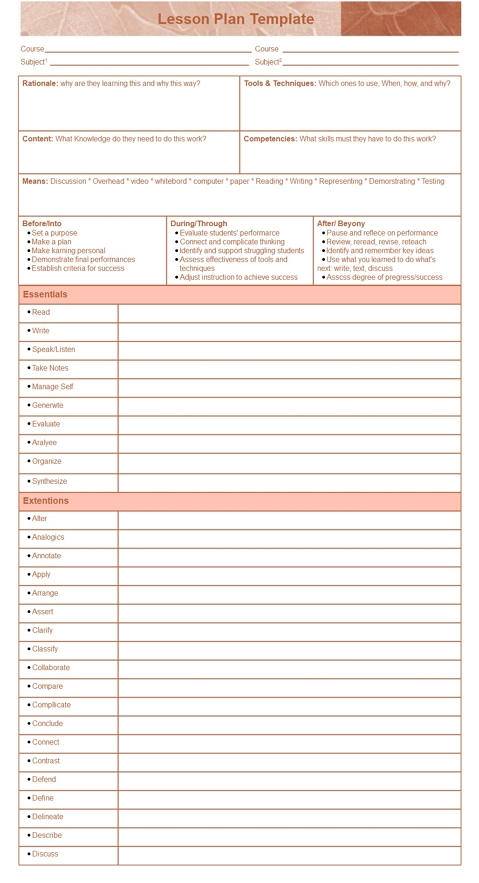Lesson Plan - Definition, Examples & How To
Do You Want to Create Your Lesson Plan?
EdrawMax specializes in diagramming and visualizing. Learn from this article to know everything about lesson plan and create your own with ease. Just try it free now!

1. What is a Lesson Plan?
A lesson plan is a teacher's detailed guide that outlines what students need to learn, how the subject would be delivered, and the achievement of class goals measured. No matter what subject is being taught, having a lesson plan guides the learning process by providing a clear outline to follow while teaching. Having the lessons planned ensures every bit of time spent in class turns out meaningful. The teacher and students would definitely know what to do in the classroom.
Details of a lesson plan may vary slightly depending on the subject being taught, the teacher's preference, and the needs of the students. Not every bit of the details has to be in a lesson plan. It should be a fine-tuned outline that builds on each period and provides a seamless transition from one lesson to the next.
2. What is Included in a Lesson Plan?
While lesson plans may vary slightly from one another, there are common components that build each one. The components work together to bring out the overall quality of a lesson plan. This will, in turn, determine how efficiently class time is utilized and the learning objectives achieved.
A good lesson plan that would work well for both teachers and students has to include the following.
1. Details of the lesson
Indicate what the lesson is about and the class you're going to teach. The details should include the unit, lesson number, class period, and the topic to be handled during the lesson.
2. Lesson objectives
The objectives of the lesson act like the mainframe of the whole plan. Setting out objectives targeted by the lesson is the most important part that will guide you to achieve what is expected from the class. Carefully write down three or four most relevant objectives students are expected to attain by the end of the lesson. The objectives should be SMART (Specific, Measurable, Achievable, Realistic, and Time-bound) and written from the learner's perspective.
3. Teaching aids
List the tools you'll use to facilitate learning by attracting your students' attention. The teaching materials should be adapted to the learning environment as well as students' learning levels. From pictures, flashcards, drawings, wall sheets, charts, and diagrams to real objects, the teacher should only write down what the lesson will use.
4. Lesson Procedure
Stages of the class session are like the framework of the lesson. Lesson procedure should work out to harmonize the following main stages of a lesson:
Warm-up stage – In which you should share, in a single sentence, how to prepare the students for the new lesson.
Presentation – Have at least three focused steps to introduce the lesson's content highlighted in the framework. The presentation should work out to capture the students' attention as you hammer in your lesson objectives.
Practice – You could divide this stage into controlled, guided, and free methods. Write one sentence indicating how to cover each type.
5. Evaluation
The evaluation stage has two categories:
Assessment – Write how to ascertain the students achieved the objectives set at the beginning of the lesson. You might have questions for students to answer in writing, or orally, give home assignments or anything suitably bringing out to what extent students have attained the lesson goals.
Self-evaluation – You, as a teacher, should take time to reflect on your lesson after ending it. Write out how things went on during class. Were the lesson objectives well achieved? Otherwise, what more needs to be done to achieve lesson goals?
6. Timing
During your lesson, for efficient time management, specify what time each stage will take and commit to the timeframe. If possible, have a specific time beside each stage, task, or activity.
EdrawMax
All-in-One Diagram Software
- Superior file compatibility: Import and export drawings to various file formats, such as Visio
- Cross-platform supported (Windows, Mac, Linux, Web, Android, iOS)
3. Lesson Plan Examples for Teachers
1. Lesson Plan Strategy
2. Lesson Plan Template
3. Simple teacher lesson plan template
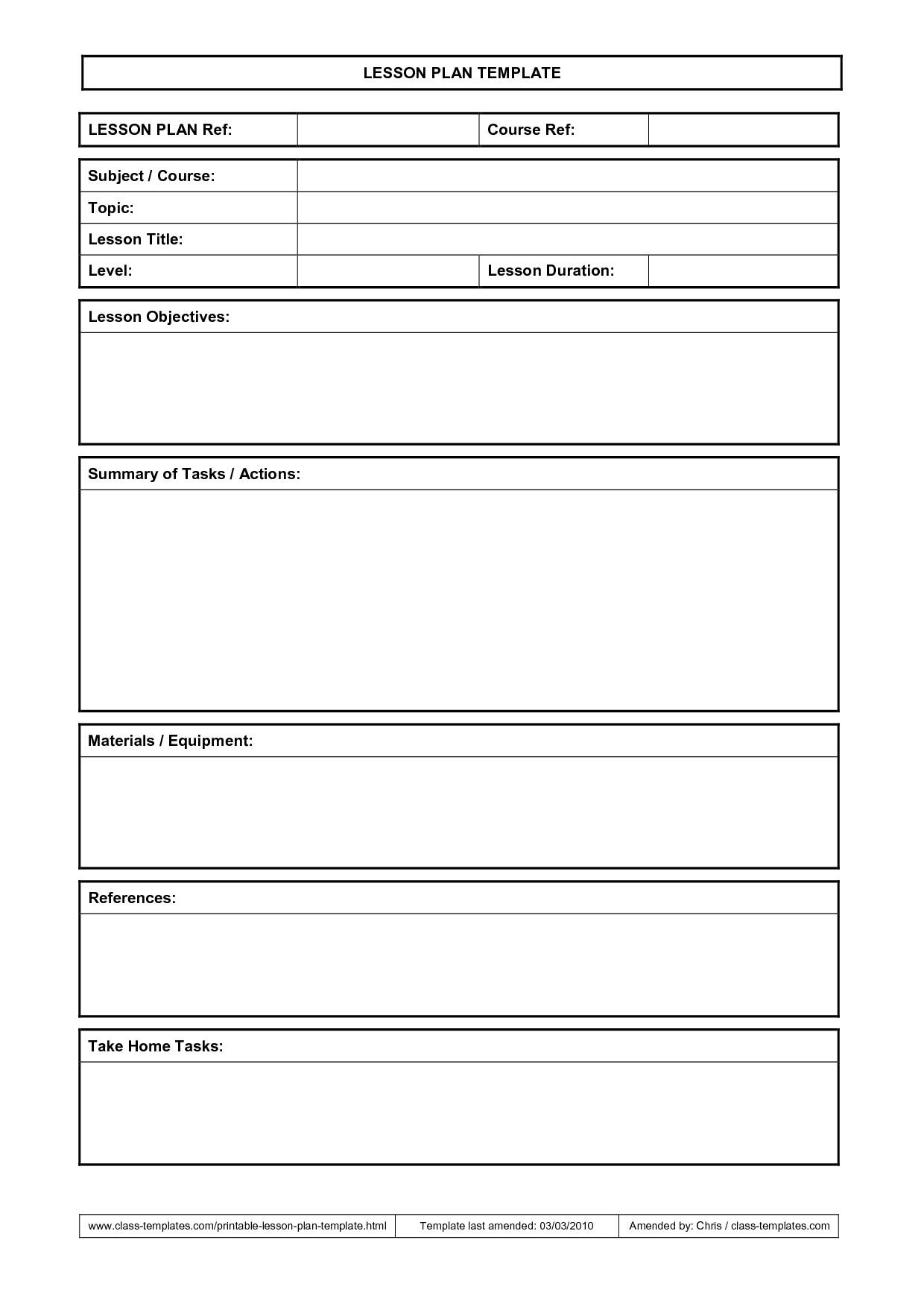
Image source: pinterest
4. Daily lesson plan template
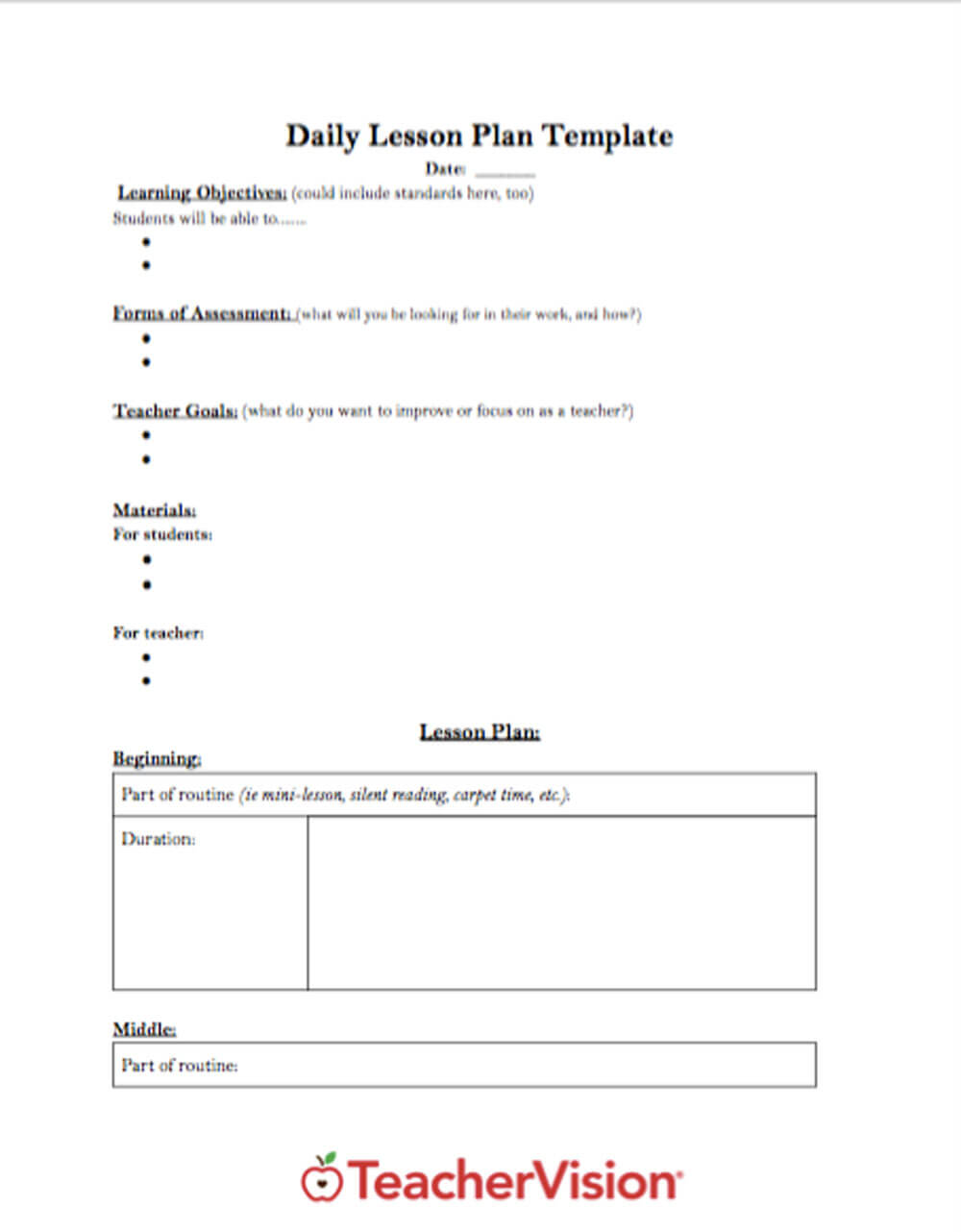
Image source: teachervision.com
5. Simple science lesson plan sample
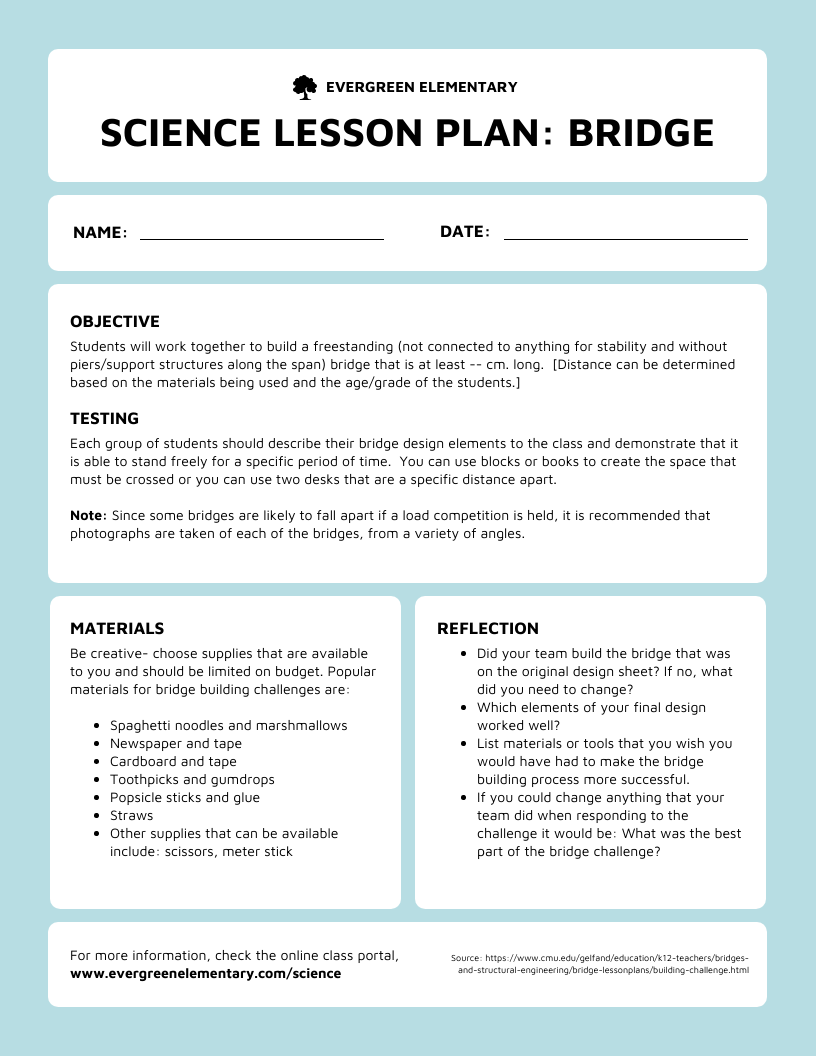
Image source: venngage.com
6. Student, teacher guide lesson plan template
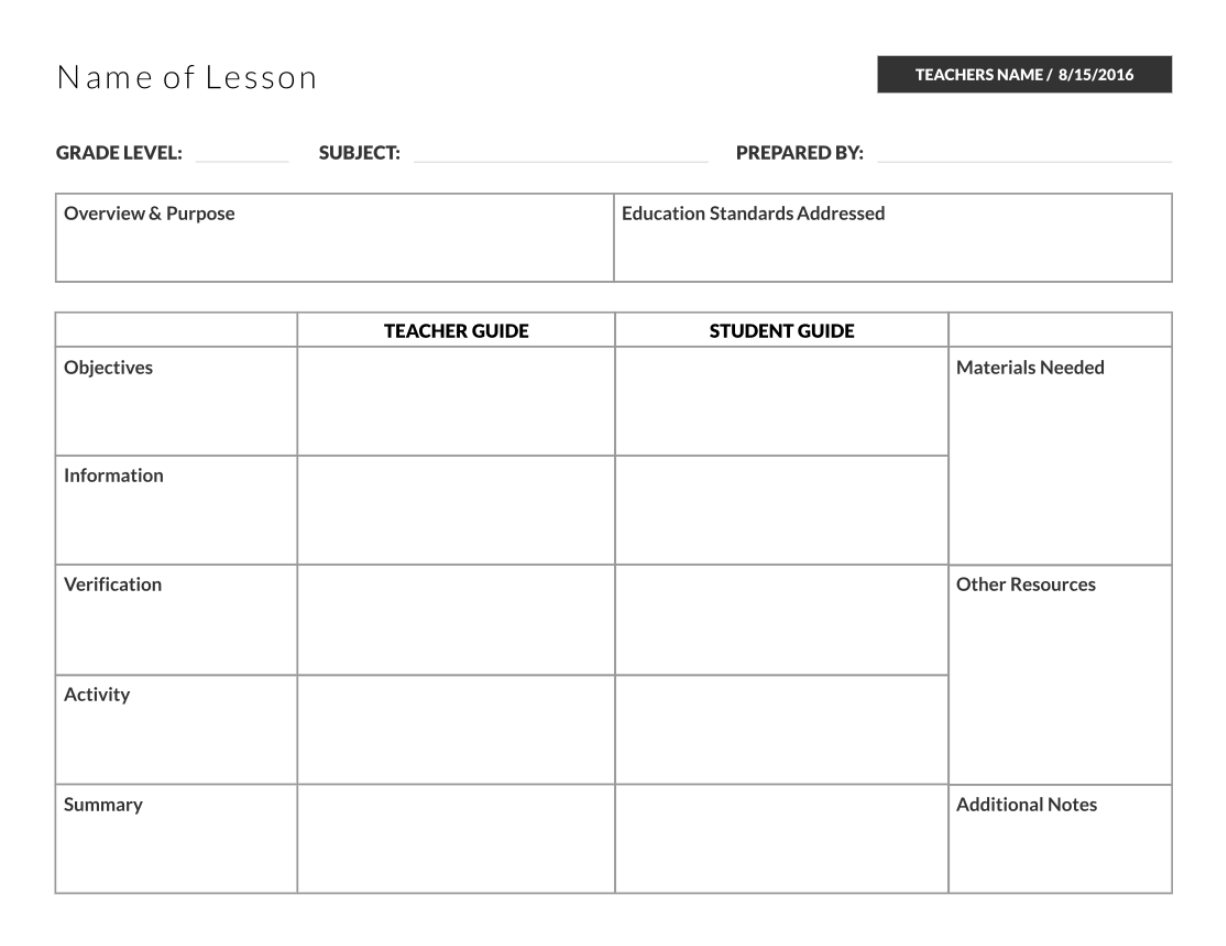
Image source: pinterest.com
7. Blank lesson plan template
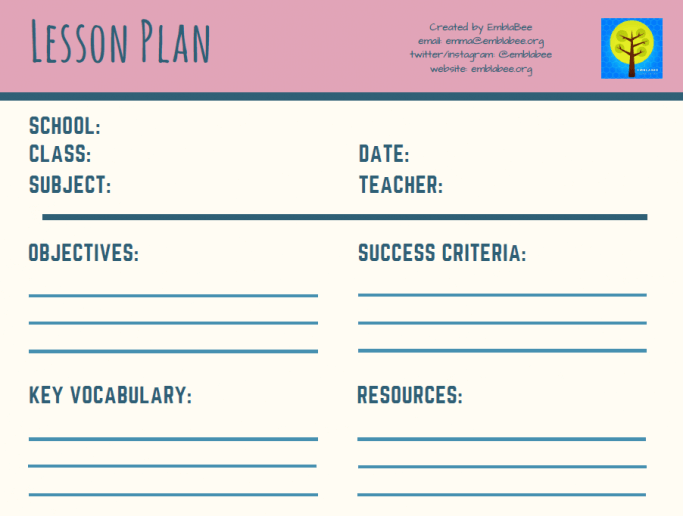
Image source: teachwire.net
8. Word lesson plan template

Image source: pinterest.com
EdrawMax
All-in-One Diagram Software
- Superior file compatibility: Import and export drawings to various file formats, such as Visio
- Cross-platform supported (Windows, Mac, Linux, Web, Android, iOS)
3. How to Make a Great Lesson Plan
Making an effective lesson plan requires you to identify suitable components that need to teach your class. It weighs into understanding the goals of the lesson and your students' abilities. While making a lesson plan, the overall objective should be to motivate the students to learn and retain what is taught.
Rely on the following steps to come out with a great lesson plan.
1. Know your students’ needs
Whether you’re introducing new topic or reviewing what you’ve already done before, you need to understand the students and let them know what to expect from the lesson. This will help them stay focused while meeting the class objectives.
When you engage your students in the whole process, it makes them more interested in what you’re to teach. Share with them what the lesson is all about and give out the outline you’ll be presenting. You could even introduce the topic informally by discussing certain relevant historical events, deriving a formula from scratch, etc.
2. Identify the objectives of the lesson
As a teacher, what do you want to accomplish by the end of class time? List the specific things that your students should know by the end of the lesson. The period objectives should be simple and SMART (Specific, Measurable, Achievable, Realistic, and Time-bound) as possible. Outline what you wish to achieve by providing an overview of the main topics or ideas by the end of the lesson.
3. List resources and materials that you’ll need for the lesson
Think and list what would be used during the period to attain the set objectives. These might include materials like paper, pens and rulers. Other technological resources like computers and gamified learning tools may be part of the lesson plan.
4. Plan your timeline
Break your lesson plan into sections if the topic to cover may not be concludable within the allotted time. This allows you to engage the students well and share the main ideas or points during the class. Planning your timeline ensures that the lesson objectives are met within the set period.
Try EdrawMax and make an excellent lesson plan to outlines the content of your lesson step-by-step.


